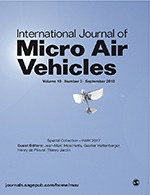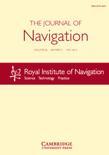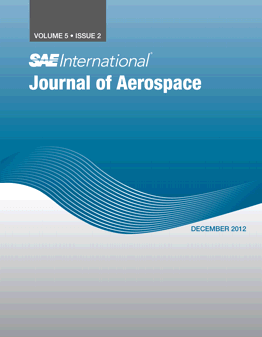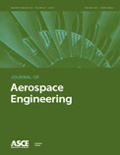
Satellite Navigation
Scope & Guideline
Advancing the Future of Navigation Research
Introduction
Aims and Scopes
- GNSS Technology Development:
Research on the development and enhancement of GNSS technology, including signal processing, satellite constellations, and new GNSS systems such as BeiDou, Galileo, and others. - Precision Positioning Techniques:
Studies focusing on high-precision positioning methodologies, including Precise Point Positioning (PPP), Real-Time Kinematic (RTK) positioning, and multi-frequency GNSS techniques. - Integration with Emerging Technologies:
Exploration of integration between GNSS and other technologies such as 5G, machine learning, and Internet of Things (IoT) to improve positioning and navigation capabilities. - Remote Sensing Applications:
Utilization of GNSS for remote sensing applications, including environmental monitoring, disaster management, and geophysical studies. - Geodetic and Atmospheric Studies:
Research on geodetic applications of GNSS, including studies on atmospheric effects, tropospheric delay, and ionospheric modeling. - Urban and Challenging Environment Navigation:
Innovative solutions and methodologies for enhancing GNSS performance in urban areas and challenging environments, addressing issues such as multipath effects and signal interference.
Trending and Emerging
- Integration with 5G Technology:
Recent publications indicate a growing interest in the integration of GNSS with 5G technology, focusing on enhancing positioning accuracy and service reliability in urban environments. - Machine Learning Applications:
There is a notable increase in studies applying machine learning techniques to GNSS signal processing and positioning algorithms, showcasing the potential for improved accuracy and efficiency. - Crowdsourced GNSS Data Utilization:
Emerging frameworks utilizing crowdsourced data for RTK positioning and atmospheric mapping reflect a trend towards collaborative and scalable navigation solutions. - Environmental Monitoring and Climate Studies:
Research leveraging GNSS for environmental monitoring, including drought and atmospheric studies, is on the rise, highlighting the role of GNSS in addressing climate change challenges. - Advanced Integrity Monitoring Techniques:
The development of sophisticated integrity monitoring methods for GNSS systems is gaining traction, particularly in applications requiring high reliability, such as autonomous vehicles.
Declining or Waning
- Traditional GNSS Signal Processing:
While still relevant, traditional approaches to GNSS signal processing appear less frequently as newer methodologies and technologies, such as machine learning and AI-driven techniques, gain prominence. - Basic GNSS Positioning Techniques:
Fundamental studies on basic GNSS positioning methods are becoming less common, possibly due to the saturation of research in this area and a shift towards more advanced and integrated approaches. - Single-GNSS System Studies:
Research focusing solely on individual GNSS systems (like GPS or BeiDou) is declining, as there is a growing emphasis on multi-GNSS integration and interoperability. - Static GNSS Applications:
Static applications of GNSS, such as those limited to fixed-point positioning, are seeing reduced publication frequency, with a shift towards dynamic and mobile applications.
Similar Journals

International Journal of Micro Air Vehicles
Innovating the Skies: Research that Takes FlightThe International Journal of Micro Air Vehicles, published by SAGE Publications Ltd, stands as a pioneering platform for cutting-edge research in the rapidly evolving field of micro air vehicle (MAV) technology. With an ISSN of 1756-8293 and an E-ISSN of 1756-8307, this journal caters to a diverse readership, including aerospace engineers, researchers, and industry professionals who are at the forefront of innovation in aerospace engineering. It holds a commendable position within the Q3 category of Aerospace Engineering for 2023 and is ranked 65th out of 153 in Scopus, placing it in the 57th percentile among its peers. As a vital resource since its inception in 2010, the journal emphasizes advancements in design, performance, and applications of MAVs, while facilitating knowledge sharing and collaboration across disciplines. Although it operates on a subscription model, the journal ensures accessibility of pivotal research findings for professionals and scholars alike, aiming to shape the future of aerospace applications through rigorous academic inquiry.

JOURNAL OF NAVIGATION
Navigating the Future of Ocean ResearchJournal of Navigation, published by Cambridge University Press, is a premier academic journal that has served the maritime community since its inception in 1948. With an esteemed ISSN of 0373-4633 and an E-ISSN of 1469-7785, this journal is recognized for its rigorous peer-reviewed research that significantly contributes to the fields of Ocean Engineering and Oceanography. The journal ranks in the Q2 quartile, showcasing its position among the top-tier publications in these domains, with impressive Scopus rankings placing it 24th in Oceanography and 22nd in Ocean Engineering. While currently not an open-access publication, it offers valuable insights and advancements relevant to researchers, professionals, and students, fostering a deeper understanding of navigation in both theoretical and applied contexts. The Journal of Navigation aims to disseminate innovative research that impacts maritime practices and enhances navigational safety and efficiency.

SAE International Journal of Aerospace
Exploring New Frontiers in Aerospace Research.The SAE International Journal of Aerospace, published by SAE International, serves as a critical platform for innovative research and advancements within the field of aerospace engineering. With an ISSN of 1946-3855 and an E-ISSN of 1946-3901, this esteemed journal contributes significantly to the body of knowledge in the aerospace sector, boasting a convergence span from 2008 to 2024. While currently categorized in Q4 of Aerospace Engineering, the journal is dedicated to fostering emerging ideas, technologies, and methodologies that could eventually elevate its standing. Although it does not offer open access options, the journal ensures wide dissemination of its well-curated articles to aid researchers, professionals, and students in staying abreast of the latest developments and trends. Given its distinct focus and commitment to the aerospace community, the SAE International Journal of Aerospace plays an essential role in bridging theory and practice, making it a valuable resource for those within this vital and evolving field.

Navigation-Journal of the Institute of Navigation
Illuminating the Path of Navigation ResearchNavigation - Journal of the Institute of Navigation (ISSN: 0028-1522, E-ISSN: 2161-4296) is a prestigious academic journal published by the Institute of Navigation (ION) based in the United States. Since its inception in 1946, the journal has aimed to advance and disseminate research in navigation, covering critical topics within the realms of Aerospace Engineering and Electrical and Electronic Engineering. With an impressive Q2 ranking in both fields for 2023 and a notable Scopus rank positioning it within the top quartile of Aerospace Engineering, it serves as an essential resource for researchers, professionals, and students interested in cutting-edge navigation technologies and methodologies. Embracing the Open Access model since 2022, the journal ensures that its high-quality content is readily accessible to a global audience. With a commitment to fostering innovation and collaboration, Navigation plays a pivotal role in shaping the future of navigation science and engineering.

JOURNAL OF AEROSPACE ENGINEERING
Advancing aerospace innovation for a soaring future.JOURNAL OF AEROSPACE ENGINEERING, published by the American Society of Civil Engineers (ASCE), is a premier scholarly journal that serves as an essential resource for engineers and researchers in the aerospace engineering domain. With an ISSN of 0893-1321 and an E-ISSN of 1943-5525, this journal has been dedicated to advancing knowledge since its inception in 1988 and will continue to do so through to 2024. The journal is categorized in the Q2 quartile across multiple engineering disciplines, including Aerospace Engineering, Civil and Structural Engineering, Materials Science, and Mechanical Engineering, reflecting its reputable standing in the community. The impact factor speaks to its influence and relevance, making it a critical reference for ongoing research and innovations. Although this journal does not offer open access, it ensures that its content is comprehensive, engaging, and peer-reviewed, targeting a diverse audience of professionals, academics, and students involved in the fields of aerospace engineering and related disciplines. The journal actively contributes to shaping future engineering practices, showcasing cutting-edge research and fostering collaboration among discipline experts.

Reports on Geodesy and Geoinformatics
Pioneering research at the intersection of earth sciences and technology.Reports on Geodesy and Geoinformatics, an esteemed scholarly journal published by SCIENDO, stands as a vital platform in the field of geodesy, geoinformatics, and related sciences. With an ISSN of 2391-8365 and E-ISSN 2391-8152, this open-access journal has been providing free access to impactful research and advancements in the domain since 2013. Located in Warsaw, Poland, at Bogumila Zuga 32A, Mazovia 01-811, it aims to disseminate high-quality research articles, case studies, and reviews that are crucial for academics, industry professionals, and students alike. The journal's commitment to promoting innovative methodologies and technological advancements reinforces its position as an important resource for fostering collaboration and knowledge sharing across global communities in geodesy and geoinformatics.

JOURNAL OF SURVEYING ENGINEERING
Empowering Engineers with Cutting-Edge Surveying InsightsJOURNAL OF SURVEYING ENGINEERING, published by the ASCE-Amercian Society of Civil Engineers, is a pivotal resource in the field of Civil and Structural Engineering, specifically focusing on the advancements and methodologies within surveying practices. Established in 1980, this journal has established itself as a reliable source of high-quality research, boasting an impressive 2023 Q2 ranking in its category, demonstrating its impact and relevance in the engineering community. The journal features rigorously peer-reviewed articles that encourage innovative approaches and solutions in surveying engineering, maintaining a consistent publication schedule through 2024. Although it operates under a traditional access model, the journal remains an influential platform for disseminating essential findings and methodologies. By fostering knowledge exchange among researchers, professionals, and students, the JOURNAL OF SURVEYING ENGINEERING continues to play a critical role in shaping the future of civil engineering research and practice.

MICROWAVE JOURNAL
Illuminating Innovations in Microwave ApplicationsMicrowave Journal, published by Horizon House Publications Inc, is a well-established platform in the field of Electrical and Electronic Engineering, specifically focusing on the advancements and applications of microwave technology. Since its inception in 1969, the journal has consistently delivered high-quality research, making it an invaluable resource for professionals, researchers, and students alike. Despite its Q4 ranking in Scopus for 2023, the journal plays a crucial role in disseminating knowledge and fostering innovation within its niche, showcasing developments across various areas including microwave systems, components, and applications. Although it does not offer Open Access, the journal’s comprehensive insights and peer-reviewed articles are essential for anyone looking to deepen their understanding of microwave engineering. By maintaining a rigorous editorial standard, Microwave Journal continues to shape the discussion and evolution of microwave technology.

Boletim de Ciencias Geodesicas
Innovating the Future of Earth and Planetary SciencesBoletim de Ciências Geodésicas is an esteemed academic journal published by the Universidade Federal do Paraná within its Centro Politécnico. Focused on the dynamic field of Earth and Planetary Sciences, this Open Access journal has been a pivotal resource since 1997, fostering the dissemination of critical research and innovative methodologies. With an impact factor indicative of its relevance in the discipline, Boletim de Ciências Geodésicas ranks in the Q3 quartile for Earth and Planetary Sciences as of 2023, showcasing its commitment to quality scholarship in a competitive field. Researchers and students alike will benefit from access to cutting-edge findings, given its broad scope that encompasses various aspects of geodesy and related sciences. The journal's convergence of research from 2005 to 2024 ensures that it remains at the forefront of emerging trends and fundamental developments in the discipline, further enhancing its esteemed reputation in the academic community.

Journal of Electronics & Information Technology
Transforming Ideas into Innovations in ElectronicsJournal of Electronics & Information Technology, published by the prestigious Chinese Academy of Sciences, Institute of Electronics, stands as a vital resource in the field of Electrical and Electronic Engineering. With an ISSN of 1009-5896, this journal has been dedicated to the dissemination of advanced research and innovative applications since its inception in 2001. It holds a competitive position within its category, ranked Q3 in the 2023 Scopus database, reflecting its contribution to the scientific community. The journal addresses a wide array of topics related to electronics and information technology, making it indispensable for researchers, professionals, and students aiming to stay at the forefront of technological advancements. Although it operates under a traditional model of access, its cumulative output remains pivotal for knowledge sharing and innovation in the rapidly evolving landscape of electronic engineering. With its commitment to excellence, the Journal of Electronics & Information Technology aims to foster a thriving academic environment and promote impactful research within the discipline.